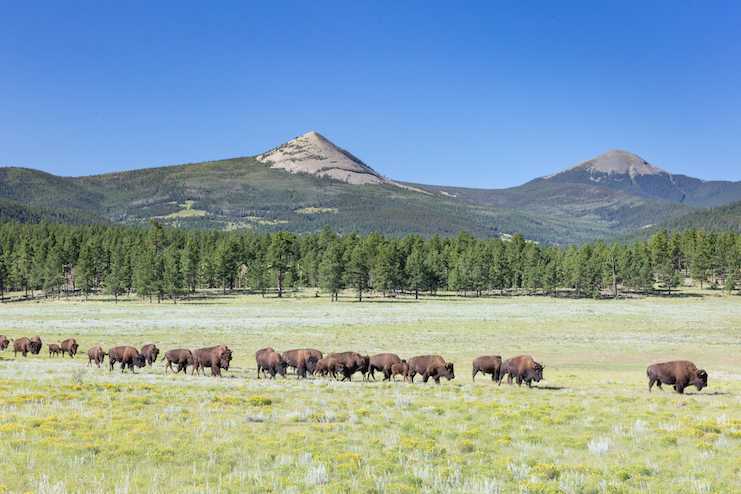The 35-mile driveway leading to Vermejo, a Ted Turner Reserve in New Mexico, is an adventure in and of itself. Before even arriving at the resort, guests can spot herds of elk, deer, and wild horses. “Guests feel an immediate connection to nature once they enter Vermejo,” describes Jade McBride, Ted Turner Reserves’ managing director. Travelers can also extend that connection through a Wildlife Safari, where they can observe hundreds of mammal and bird species—bald eagles, pronghorn, black bears, mountain lions, bobcats, bighorn sheep, and the occasional marmot, to name a few. But one of the most sought-after sightings at Vermejo is that of the American bison. On November 2, National Bison Day, McBride says that Vermejo is celebrating by giving guests a chance to see bison in nature as guides share the conservation efforts around the species.

When McBride first moved to Vermejo from Montana, his family decided to make a road trip out of it, driving south and stopping off at National Parks along the way. “We visited many parks on our way from Glacier, through Yellowstone and on to the Tetons, Zion, Bryce, and finally, Grand Canyon,” he says. In Yellowstone National Park, he experienced his first bison sighting. “We saw one bison, just off the main road, with 50 or more car loads of other people.” However, the drive to Vermejo offered a wholly unique experience. “When arriving at Vermejo, we noticed how we had been traveling for over 30 miles without seeing any other cars and just then we came over a little hill and there was a group of over 100 Bison right next to the road. We just stopped, our eyes fixed on the herd as they slowly moved. Everyone was silent, as no one could really find the words to describe the way it made them feel. It was a powerful moment for my family, and I had fallen in love.”
As the second largest landowner in the United States, Ted Turner has adopted the mantra of “Save Everything” in efforts to restore and conserve both land and wildlife, most notably the American bison. He purchased his first bison in 1976 and now has a herd of 55,000 across all properties. McBride says that some guests visit Vermejo primarily to witness the bison roaming free. “Guests are speechless upon their first bison sighting,” McBride explains. “It’s truly moving to see how guests are impacted when they see bison in their natural habitat.”

Turner’s mission to “Save Everything” is ingrained in the brand’s DNA, McBride explains. “First and foremost, our goal is to create and sustain a balanced ecosystem to help rehabilitate the land and wildlife population back to its original state. Our expert team of scientists at each reserve studies the wildlife patterns and land needs and create their own data set to inform any actions, change, or successes seen at the Ted Turner Reserves properties.” In addition to the American bison, some of the species that McBride says have shown successful comebacks include the Rio Grande cutthroat trout, the Bolson tortoise, and the Mexican wolf.
“Bison are an important species in our country’s history,” McBride adds. “And they are one of the keys to saving our planet.”








